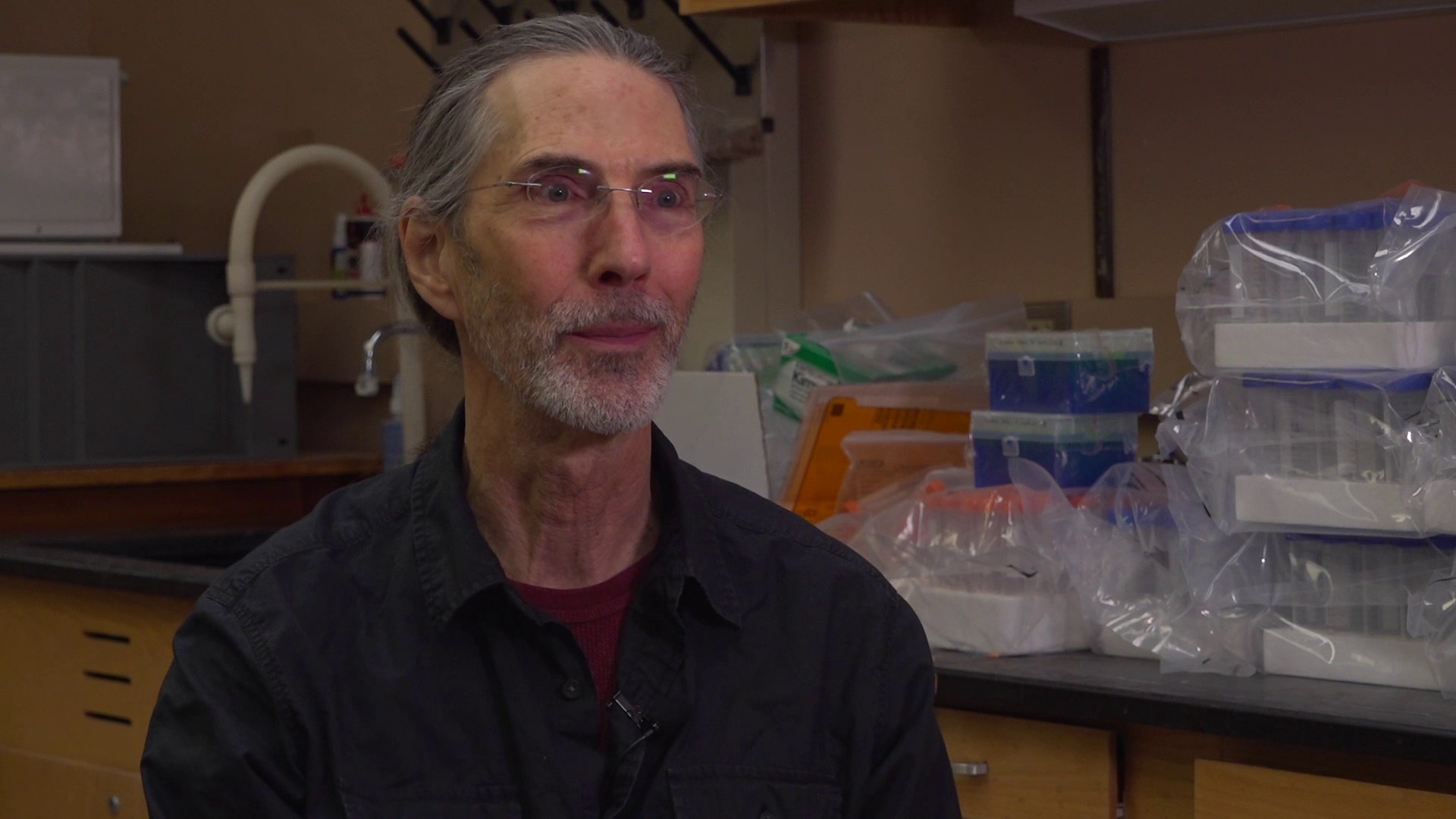AMES, Iowa — Scientists have studied DNA, the basic unit of life, for a long time. And in the past couple decades, geneticists have created nanoparticles out of DNA's two helix strands.
Look back at the past 10 years, and you'll find Eric Henderson hard at work inside his cluttered yet sophisticated cell biology lab. From pencil and paper sketches to using an atomic microscope, Henderson and two doctoral students at Iowa State University have been doing research on fabricating DNA nanoparticles.
The innovation would allow scientists to change DNA materials to convey their own genetic instructions inside a body.
"There's about 200 parts, put 'em in a tube," Henderson explained. "Heat it and cool it, and they all magically assemble into exactly what we want."
Henderson wants biomedical companies to use his research as a first-of-its-kind discovery to make advancements in treatments for individuals with an organ malfunction.
"Inject it into a person who has a liver malfunction, because of a genetic error," he said, talking about a usage scenario. "The [nanoparticles] go all over the body and attach to the liver, and literally edit their genome in that liver to fix that genetic malfunction."
Henderson's team has shown they can change DNA nanoparticles with a specific genome expression, which contains all of a person's or animal's genetic information, to fix a genetic error.
Iowa State University's breakthrough genetic discovery doesn't allow them to gene-edit cells specifically, but they hope to be able to do that in the future.
"Imagine your kid has a genetic disease, you could treat it," Henderson said. "Put a Band Aid on it, or you can cure it. Let's cure it."
Scientists haven't accomplished this feat at a nationally recognized manner, but physically editing the genetic makeup of cells could fix genetic errors individuals are born with, by taking a DNA sample and removing specific, malfunctioning genomes.

